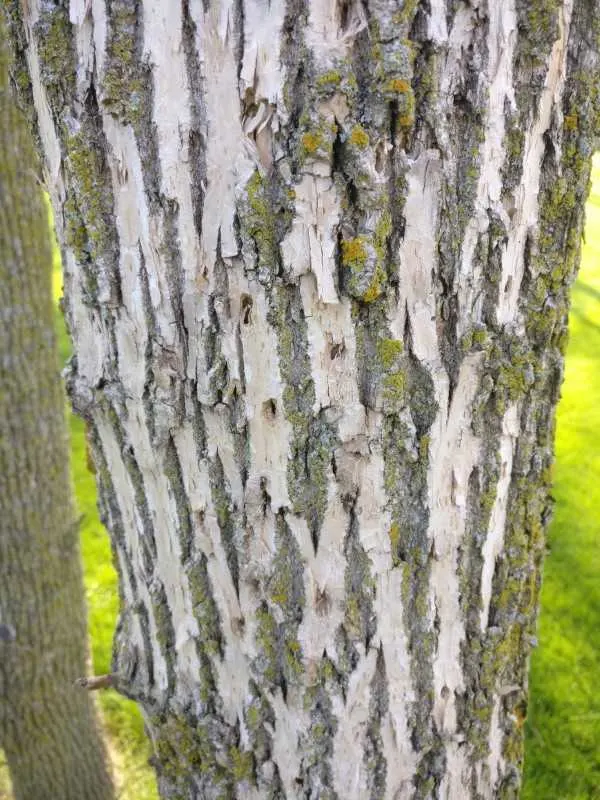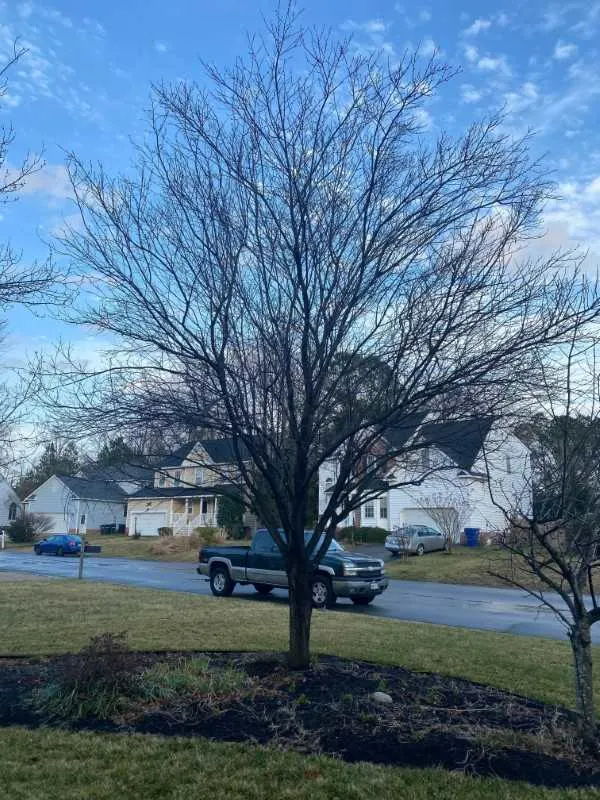If you’re wondering how to tell if a tree is dead, it implies you must’ve already spotted familiar problems and first signs of tree decay, such as lack of new buds or leaves and, at times, no leaves at all on the wrong season.
With that in mind, today’s guide will not only further clarify how you can ascertain the tree on your land is indeed dead but will also share several tips you can employ to take care of your trees better and ensure no other trees die on you.

How to Tell If A Tree Is Dead
Heaving Roots
In any plant species, exposed roots signify an impending problem. I know some root systems will tend to hang out either near or over the ground’s surface. That said, this isn’t true for most species. So, if the roots of the tree you’re inspecting were heaving for a while, the chances are that it died due to insufficient growing space.
To spot the next time this occurs to one of your other trees, note that heaving usually happens after dangerous weather or heavy rain. If the tree with heaving roots was a small one, you’ll need to stake or upright it accordingly until it’s stable again.
Cracks or Trunk Wounds
From time to time, trees will take a beating. Think of the boulevard tree that is repeatedly struck by the UPS truck as it delivers products up the street or the tree that the drunkard individual accidentally backed into in a park.
As such, if the tree you suspect is dead was repeatedly stuck either by accident or intentionally (more than several times a week), it could have suffered structural damage that impaired it and eventually killed it off. If not taken care of or cut down and is still repeatedly getting hit, it could also pose a risk to surrounding property and people.
Another thing that can deliver killing blows to otherwise healthy trees is storms. If you notice huge cracks in a trunk’s bark or trunk that seem to have appeared out of nowhere, they may also be a sign of structural damage caused by natural forces like storms.
The last cracks you should watch out for in trees you suspect are either dead or dying are horizontal cracks. These usually indicate that the tree’s wood fibers are cracking or breaking, and the tree may fall.
Drooping, Browning, or Scorching
Have you been watering your trees using a sprinkler? If yes, and it has started showing browning and scorching branches, then the sprinklers may have killed the tree.
If I got a drink for every time my readers thought their grass sprinkler systems were sufficient to water trees, this guide would be filled with unintelligible writing.
Sprinkler systems aren’t good enough for trees, which is especially true in drought conditions because the water not only doesn’t reach the tree’s roots but all surrounding turfgrass and plants are also competing for the same water.
Instead, to water your trees, use black soaker hoses. If you do not own one, simply put your garden’s hosepipe on a small trickle level, place it on the ground next to the tree’s stem, and let it slowly soak the soil throughout the day. Remember to rotate the hose every two hours or so for better results.
What’s more? Note that some trees won’t show browning or scorching branches and leaves until it’s too late. This is particularly true when dealing with younger and smaller trees.

Sloughing Bark
Bark sloughing off the tree’s trunk can often be a sign of decay caused by a fungus. Note, though, that this isn’t always a sign that the tree is dying or already dead. Some tree species have been known to shed their barks naturally. These include the river birch, crepe myrtle, and sycamore.
With that in mind, if you notice a white or silvery plating under the tree’s bark or a scale that resembles a dead lesion, then it’s a sign that the plant was affected by a canker disease known as hypoxylon.
With trees affected by hypoxylon, you might also notice some sap oozing down the tree’s trunk in the early stages. The good news, though, is that if caught early, hypoxylon isn’t anything you cannot treat yourself at home.
If you do not have the skills, however, or are simply worried about your tree’s future health, feel free to get in touch with a professional for personalized solutions.
Oozing Sawdust or Sap
If you noticed sap oozing down the tree’s trunk from certain holes that resembled knife wounds, chances are your tree had a borer insect problem before it died. Note, though, that some trees, like elm, usually ooze saps and isn’t a sign of danger on them.
Anyway, if you’re an avid plant parent, you must’ve heard of the emerald ash borer. The insect lays eggs inside trees, lives in their plant tissues, creates tunnels inside them, and eventually essentially starves the tree. Almost every tree left with an emerald ash borer infestation dies.
Dieback
If you were to consult a professional about a tree that seems dead, the first thing they would do is a bottom-to-top assessment, so you might start with that as well.
Start with the tree’s crown at the top and see if you can spot any leaves on the branches. If your tree has a leaf canopy, but only a few leafless branches are sticking out at the top, that’s what is referred to as a dieback. It’s a condition in which shrubs or trees start to die from the tips of their roots or leaves backward due to either unfavorable environment or disease.
Final Thoughts
Since grass already have so much of homeowners’ attention, most of them (homeowners) tend to forget that trees need some tender loving care as well in order to thrive. After all, since trees are the ones that bring valuable shades and beautiful aesthetics to our landscapes, TLC is the least we can give them in return.
With that in mind, the soon you discover a problem with your tree, the better your chances of saving it before it completely dies. The tips I’ve shared above should help you ascertain whether your tree is dead, dying, or is simply sick.
